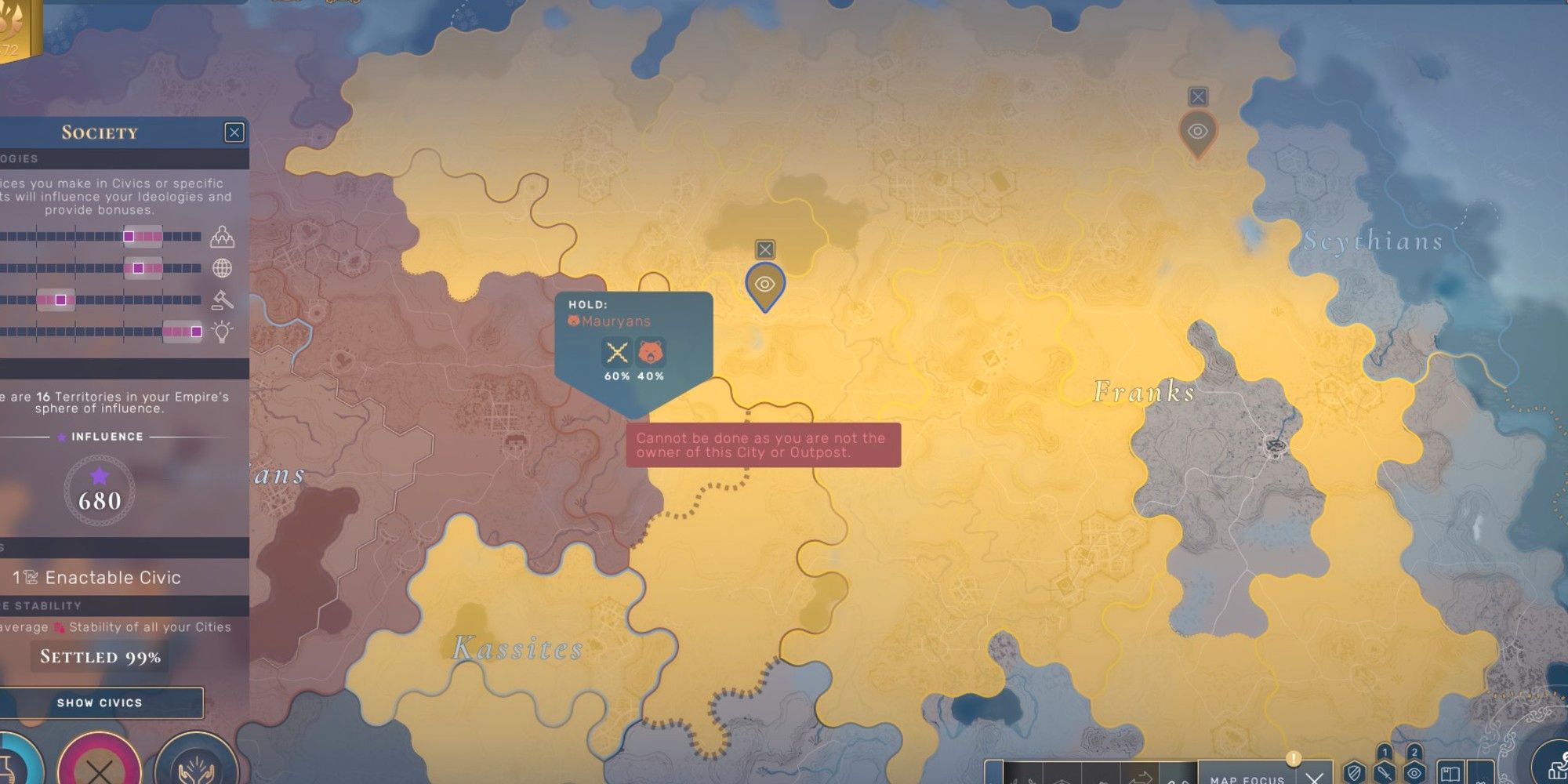
Quick Links
- How To Spread Your Culture In Humankind
- How To Get More Influence In Humankind
- What Can You Do With Cultural Conversion?
Culture Conversion is a huge mechanic in Humankind, based on your empire's output of Influence. Influence is used for all sorts of things in the game, like purchasing new civics and merging cities together. It's important that you pick up at least one culture that benefits your Influence output.
RELATED: Humankind: Beginner Tips
Influence and cultural conversion go hand-in-hand. You can spread your culture, much like you spread Faith, to other empires. Completely convert your neighbors and they're more likely to hand over their cities or enter into an alliance with you. Here's how culture conversion works in Humankind.
How To Spread Your Culture In Humankind

Your cultural conversion rate is determined by the output of Influence in your empire. If you're earning more Influence than a neighbor, for example, their cities are more likely to enter into your sphere of Influence. Check out our city management guide to maximize your Influence output.
Adjacent territories will obviously convert quicker, and Aesthete cultures have the ability to convert cities on the edge of their empire to increase the output rate of Influence on nearby cities and Outposts.
There are several boosts and upgrades, particularly from Contemporary-era wonders, that will provide you with extra stats based on how many cities are in your sphere of influence. Even though there is no "cultural victory", converting nearby empires will give you a huge advantage.
RELATED: Humankind: Public Ceremonies – Are They Worth It?
How To Get More Influence In Humankind

Influence is largely determined by your culture. There are some generic productions and buildings that provide Influence, like the Commons Quarter, for example, but you will get the majority of your culture from your culture choice.
- In the early game, the Olmecs are a solid choice for an Influence rush. Their +1 Influence on each territory you control is good if you've managed to expand early. The Olmec Head also scales with +1 Influence per adjacent Farmer's Quarter.
- Both the Mauryans and Franks have good Influence scaling in the Classical era. The Stupa emblematic building for the Mauryans is a big spike of Influence for +2 Influence per any adjacent District, whereas the Franks just get a flat +10 per cent bonus to Influence.
There are more Cultures in the later game eras that provide Influence, like the Italians, or Austro-Hungarians. You should aim to spend one era with an Influence-producing culture if you want to keep up with your neighbors, lest you become a victim to cultural conversion from neighboring empires. Check out our best cultures for each era guide to learn more about making the right choice.
What Can You Do With Cultural Conversion?

Cultural conversion can be hugely powerful if used in the right way. Converting your neighbors to your Influence gives you huge advantages, whether you want to conquer via assimilation, demand territories, or play a peaceful game of trade and alliances.
- Convert your neighbors and they will be forced to bring their social ideology more in line with yours. This works through the game's "Osmosis" system, where cultures are punished by severe stability reductions if they don't accede to the pressure of their neighbors.
- Cultural conversion also gives you grievances to use in war or to slowly digest neighboring cultures. This comes in the form of the "Oppressing My People" grievance. If you have a larger military the opposing culture is more likely to hand over their territories or cities to you.
- Empires within your sphere of Influence are also more likely to form an alliance with you. Alliances are massive in Humankind: they provide loads of bonuses to trade, the ability to use your neighbor's logistics network to swiftly move their territory, and various other bonuses.
NEXT: Humankind: The Best Wonders




